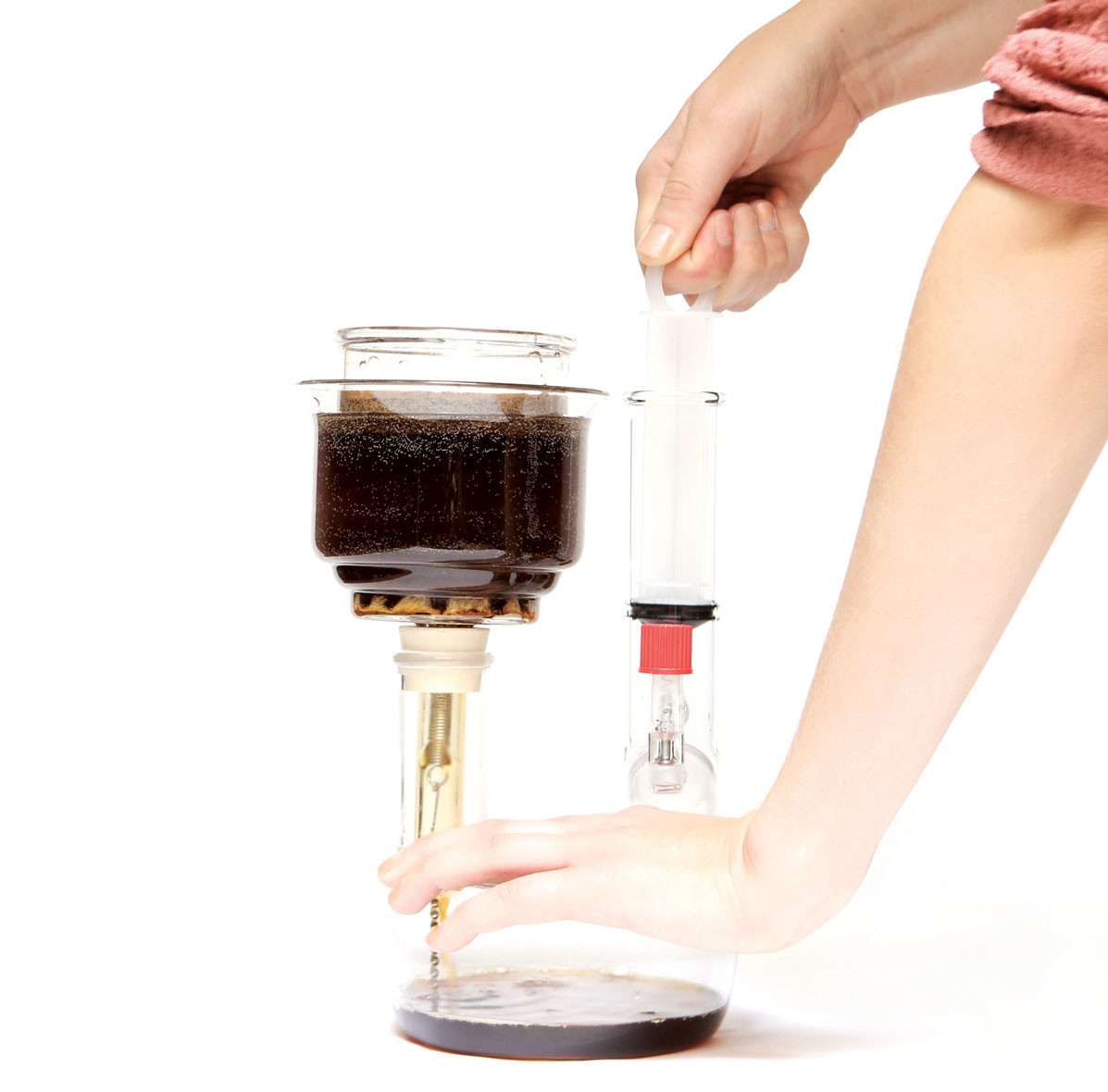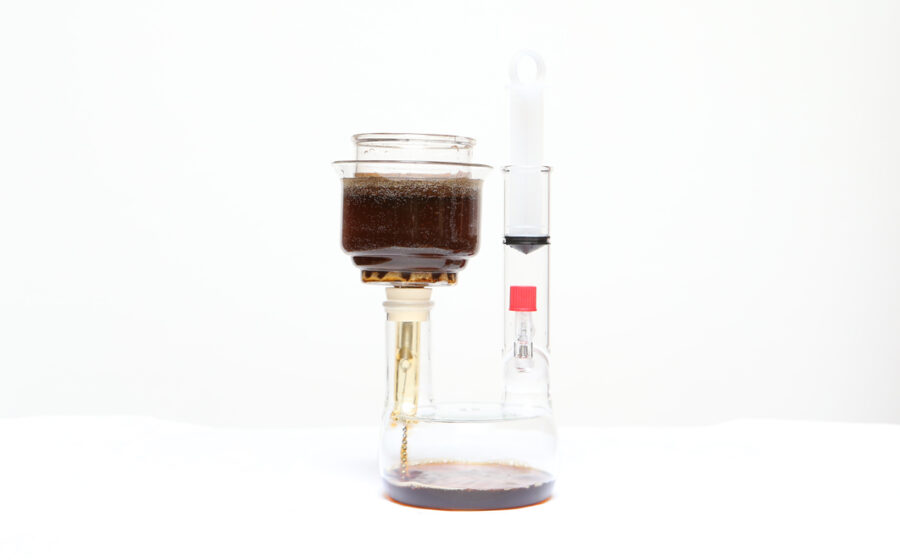[T]he great charge against specialty coffee is that it took a simple, everyday beverage and turned it into a complex, precious culinary art. While the ridicule has abated in some ways (lattes receive little abuse anymore) the complaint keeps shifting as coffee breaks new ground. Most any consumer media account of coffee still includes a can-you-believe-these-guys eye roll. That view has an analog within the industry. The head shaking toward barista competitions, the exasperation at flavor notes, the annoyance that now-you’re-taking-it-too-far. For the people on the other side of those smirks, the only rebuttal is, “It’s not for you.” There’s no need, or way, to justify it to the outside observer. Flip the bird and carry on.
All of that, then, is just about the only context in which to consider the Dragon, the new hybrid pour-over–immersion–siphon brewer from Todd Carmichael.

The Dragon is many things: it’s amazing, it’s beautiful, it’s ridiculous, it’s pretentious, it’s an icon of the worship of coffee, it’s a fragile thing you’ll break before the end of the year. The instruction manual includes seventeen steps, which means its fibbing when it says, “For people who want to just make a great cup of coffee, you’ll be able to easily do so,” but is honest in its warning to “those who totally want to geek out . . . get ready to fall down the rabbit hole.”
“This is the device that bridges the gap between people who have just a casual relationship with coffee and people who have an insane relationship with coffee.” This can only be believed by someone on the second side of that gap.
The brewer debuted at the US Brewers Cup championship in Seattle when Carmichael used three of the brewers on his way to placing second and will soon be sold by Carmichael’s La Colombe Coffee Roasters. The brewers in the first run, one of which was sent to Fresh Cup, are handmade and cost $250. While complex in its laboratorial appearance, the Dragon is simply a siphon that uses a plunger rather than heat to create a vacuum. Unlike a traditional siphon, water is poured directly on the grinds rather than percolating up from a reservoir. “Simply a siphon,” of course, means “not mass market.”
In the Venn diagram of coffee, where the circle on the left encompasses customers and the one on the right comprises coffee pros and the overlap is the selling and buying of specialty coffee, the Dragon is flung out to the far edge of the right circle, pushing so hard against the boundary that it will soon break out, making a second Venn with its kin barista competitions, throwdowns, and single-origin-only drinkers.
Carmichael does not agree. In a video demonstrating the Dragon he says, “This is the device that bridges the gap between people who have just a casual relationship with coffee and people who have an insane relationship with coffee.” This can only be believed by someone on the second side of that gap. The Dragon is for coffee people gone insane.
Todd Explains: The Dragon from La Colombe Coffee Roasters on Vimeo.
And that’s fine. It’s wonderful even. If you sighed in exasperation when you saw the photos above, then don’t worry about it: the Dragon is not for you. If you saw the device and something inside you lurched forward, wanting nothing but to grab hold of the thing, then the Dragon is the newest way you can experience and present coffee. The tactile action of pumping the plunger could provide more control than a temperature gauge on a siphon’s heat lamp. The jacket around the reservoir, which Carmichael intends cool water to be poured into, could allow mid-brew temperature fine-tuning either up or down.
The Dragon is an expansion of coffee. It represents the marvelous and encouraging fact that coffee still has the capacity to grow.
—Cory Eldridge is Fresh Cup’s editor.














